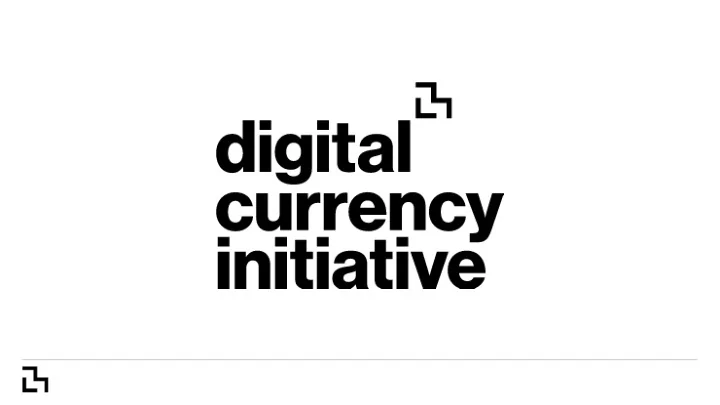

Cellular structure for a digital fiat currency Robleh Ali MIT Media Lab Digital Currency Initiative
Cellular structure for a digital fiat currency (DFC) Goals ● Cellular structure ● Rationale for cellular structure ●
Cellular structure for a digital fiat currency (DFC) Goals ● Cellular structure ● Rationale for cellular structure ● Central bank digital currency ●
Goals of a DFC
Goals ● Financial stability/resilience – Having an alternative infrastructure to make fiat currency payments enhances stability in two ways (a) providing a payment system separated out from the balance sheets of commercial banks and the risks they face, (b) allow a DFC to operate independently of operational failure or cyber attack on the banking system and vice versa. ● Competition – Separate infrastructure, service providers and fee structure for a DFC provides competition to existing payment providers, giving merchants and customers a viable alternative. Greater competition lowers costs of payment system, clearing and settlement. ● Innovation – A DFC can incorporate innovations from the cryptocurrency system and provide a platform for building new financial services which incorporate fiat currencies.
Backing Direct issue by central bank (Central bank digital currency or CBDC) ● Effect on the existing banking system ○ Wider discussion of credit creation, maturity transformation and how ○ productive enterprise is financed Privately issued (Digital fiat currency or DFC) ● Cash at central bank (no market or credit risk) ○ Government bonds (minimal to no credit risk, market risk) ○ Other assets such as corporate bonds, loans (credit and market risk) ○ Commercial bank money (credit risk, no market risk) ○
Cellular structure
DFC single cell Issuer ● Holds cash at the central bank (systemic stability) ○ Simplified version of UK commercial banknotes system ○ One ledger, one cell ○ Decides how the cell functions internally (consensus mechanism, ○ software, validators, fees) Validators ● Order transactions ○ Maintain copies of the ledger ○
DFC single cell
DFC system - single currency
DFC system - single currency Holding DFC ● With a single issuer ○ Across multiple issuers ○ Cost of fragmented liquidity ○ Inter-chain transactions ● Routing payments - multi-hop ○ Trustless intermediaries ○ Lower barriers to entry for intermediation ○ More competitive market for liquidity provision ○
DFC system - single currency
DFC system - multiple currencies
DFC system - multiple currencies Intermediaries ● Routing payments (payment versus payment) ○ Market making for currency pairs ○ Application to other tokenized assets (delivery versus payment) ● Shares ○ Bonds ○ Commodities ○
Rationale for cellular structure
Financial stability/resilience Existing system ● Efficiency of matching money and credit (Kashyap et al, liquidity paper) ○ Structural fragility from maturity transformation ○ Deposit insurance, regulation, lobbying, shadow banking ○ Credit and liquidity risks in payment systems - PFMIs ○ DFC ● Parallel system immune from contagion (fully collateralized) ○ Structural elimination of credit risk ○ System can survive failure of individual cells (resilience) ○
Competition Present competition ● Merchant payments ○ Decline of cash ○ Future competition ● Cryptocurrency strategy ○ Changing the organizational structure ○
Innovation Technological and organizational change ● Parallel with dynamos in factories ○ Technological change alone did not produce significant productivity gains ○ Bitcoin as organizational change ● Payments without banks ○ Financial system as a set of functions ○ How to extend this concept to the existing financial system ○ Cross chain atomic swaps (PvP, DvP) ■ Discreet log contracts (derivatives) ■
Recommend
More recommend